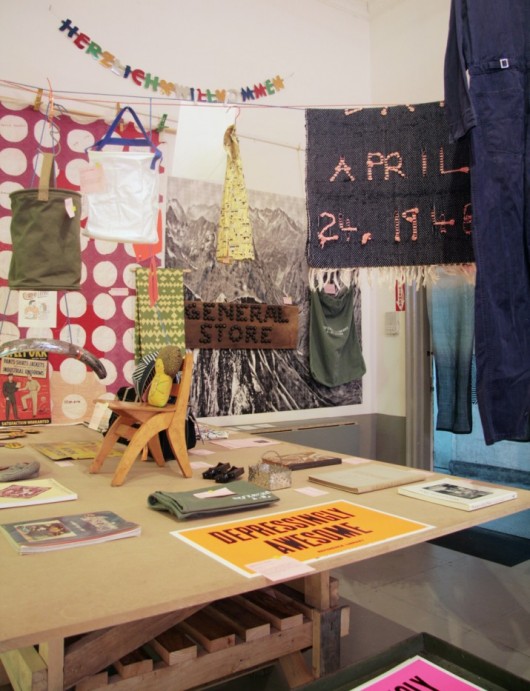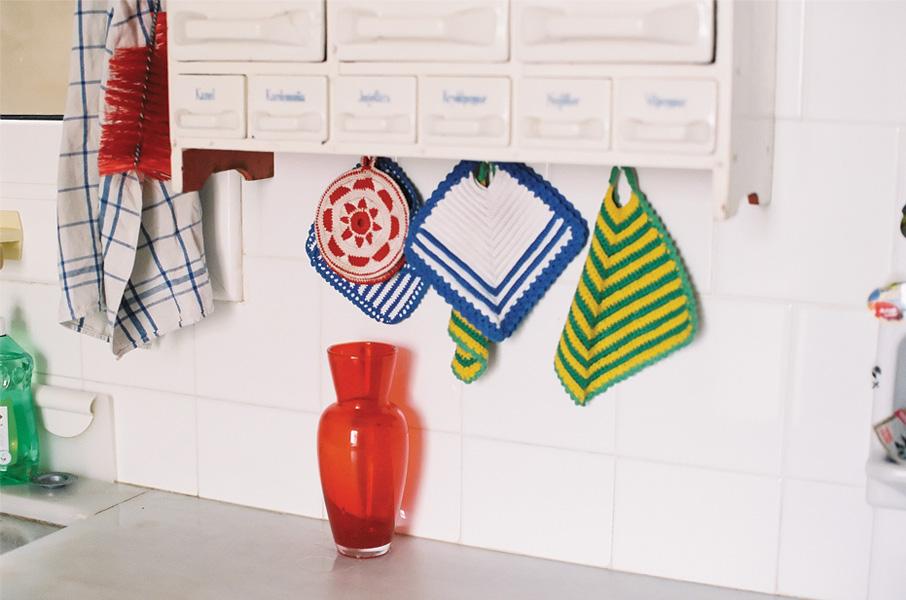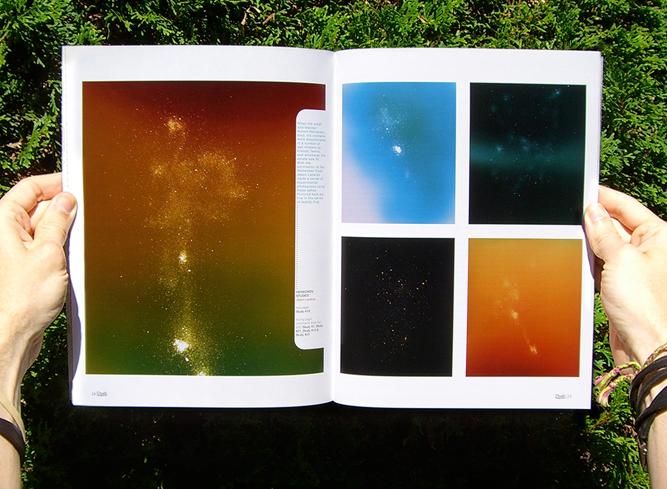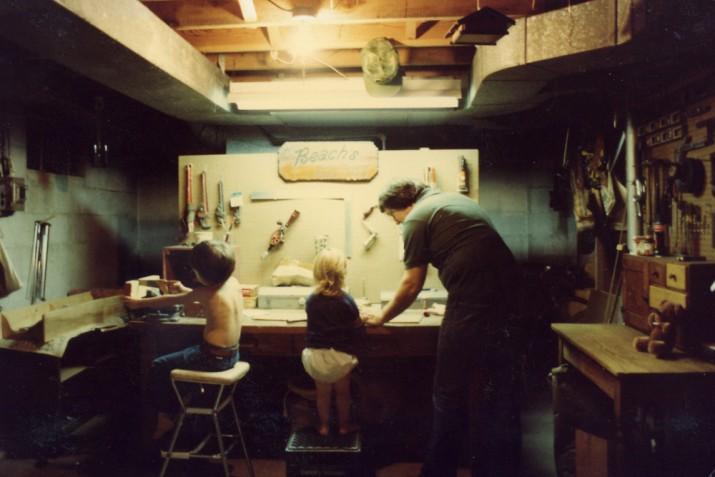
11.02.11
Sighted
Andy Beach of Reference Library in 01 Magazine
On occasion, the editors of Sight Unseen spot a story about creativity told from a viewpoint that’s not unlike our own. This one, an interview with Philly-based blogger extraordinaire Andy Beach, recently appeared in the seventh issue of the online journal 01 Magazine. Despite having never met the two women behind the Vancouver-based publication, we feel a certain kinship with them: They meander across disciplines, they cover folks who are near and dear to us like ConfettiSystem and ROLU, and they even have a healthy appreciation for the absurd. But when we saw the story about Beach, in particular, we knew we had to repost it, as we’ve been trying to weasel our way into the man’s home ever since we first met him in Milan two years ago, when he did a pop-up shop with Apartamento and sold us this book from his personal collection. For now, we’ll settle for excerpting a Q+A that shines a light on the goings-on behind the scenes of his cult blog Reference Library, including the avalanche of inspiration binders that started it all, but someday soon, Andy, we’re going to convince you to have us over for tea. And we can’t promise we won’t bring our cameras with us.
Interview by Jabari Jordan-Walker
When I was approached about developing an interview that involved a theme loosely constructed around the concept of documentation, curator Andy Beach along with his weblogs Reference Library and Stork Bites Man immediately came to mind. As a unique case within an excessively large cloud of blogs out there, Andy Beach curates content that proclaims a sense of selflessness that is shown particularly well through the cataloging of his experiences in fatherhood.
By not only taking form through the context of a single theme, Beach is able to provide his readership with inspiring content that is refreshing, honest, and doesn’t beg you to perceive him as a personality bound to the internet’s ever-useless popularity contest.
Did you study any facet of design or art formally in school?
Barely. I ended up attending five different colleges and switched my studies from engineering to graphic design, yet still graduated in only four and a half years. I ended up with a BFA but no real art education. I thought I knew exactly what I wanted and needed out of an education, so I did what I could do get through it quickly. I tried to learn without making any mistakes. I was wrong, of course. That way of working makes it very hard to be creative and expressive and honest. Learning from missteps and failures and then adjusting, not abandoning, when things go wrong is how you grow.
I remember being obsessed with The Zone System in photography classes; I kept trying to capture and reproduce what I saw with the naked eye. I wasn’t trying to make art or even trying to make a “good” photo, I just wanted the photograph to look like what I saw with my eyes. It is kind of pointless exercise, but it still fascinates and frustrates me — the way people take pictures of their goods for eBay and in the way architectural spaces are (mis)represented in magazines, it is a kind of documentation that drives me wild.

I catch a sense that your inspirations are centered on both utilitarianism and the playful moments within the everyday. Explain how these ideas influence your praxis and theories in art and design?
I don’t think I’ve ever been all that interested in the fantastic. I like projects with a purpose. Whatever process I have definitely comes from being a keen observer and wanting to find a solution to a problem, but never without humor. You’re right; I like to find the playful moments within something dry or even boring. I feel free to think and inspired when I’m driving long stretches of highway between Pennsylvania and Michigan. Focused on the road and the limited landscape is a perfect structure for finding or creating playful moments.
The idea of a reference library refers to a place where things are documented, archived, and researched on site. How is the concept of a reference library reflected within your blogging methodology?
Well that was the whole point at the very beginning. I started Reference Library because I was looking for a way to organize the thousands of images on my computer. It could have just as easily ended up as a flickr account or a well-organized iPhoto library. I liked the idea of tagging and making it somewhat public. A week later I had visitors and it became a Blog. I wanted it to be a tool; an archive of images I could go back to again and again for research. It naturally evolved into something else, and just like Stork Bites Man, Reference Library is more about experiences than objects. It may look like an image or object blog to most people; the tags are only rough chunks of meaning. For me these things are very personal and have significance beyond what it is shown on the blog. I can go back in the archive to certain weeks or individual posts and be reminded of something funny my daughter said, the house we almost bought, or the fire I almost started. It is still a tool, but for me it’s more about processing my own ideas than being an “inspiration” resource.
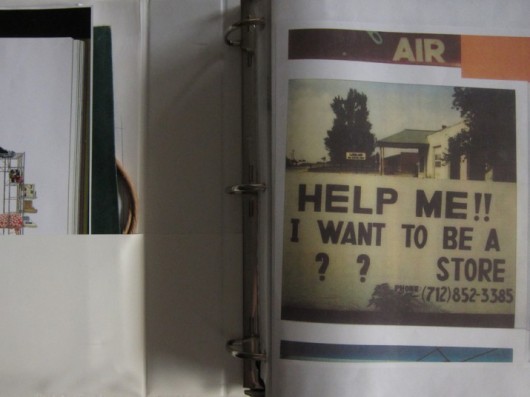
Before having the luxury to document your interests and memorable activities through various web-based narratives, how would you compile the artifacts that you felt needed to be revisited?
That’s why I had to start the blog. I was keeping three-ring binders but it was such a static archive. I couldn’t do anything with them. I wasn’t able to compile or archive anything in a satisfying way. I needed a structure. “To find a form that accommodates the mess, that is the task of the artist now.” Jason Fulford shared that quote with me and it’s a perfect fit for how the blog works and for what I need to do to make it keep working.
Do you try to maintain a physical reference library at home?
I try. But I am not as organized as you might expect. There are piles and piles. And stacks of books on top of the piles. My grandma was a hoarder. It’s in my blood.
eBay plays a big role in your hunt for objects and clothing, can you name a few of your most memorable finds?
Years before I started the blog, I was outbid on a chair (a “Domus” dining chair by Ilmari Tapiovaara). I contacted the high bidder hoping he might change his/her mind and let me have it. Turns out it was the artist Robert Gober. I always thought that was funny. I still know his eBay name and sometimes check out what he’s bidding on.
In May 2007, I came across a listing for a beautifully weird birdhouse made by Stan Bitters. I didn’t know anything about him or his work but I liked the object and wondered why it was five hundred dollars. Someone else got it and I ended up posting it on Reference Library. A reader from California saw it on my blog and loved it too. He contacted Stan Bitters and then started to carry the birdhouses in his shop, South Willard. So that’s how I met Ryan Conder, who became a fast friend. (We did the Shrimp Shop together at his shop in 2009.)
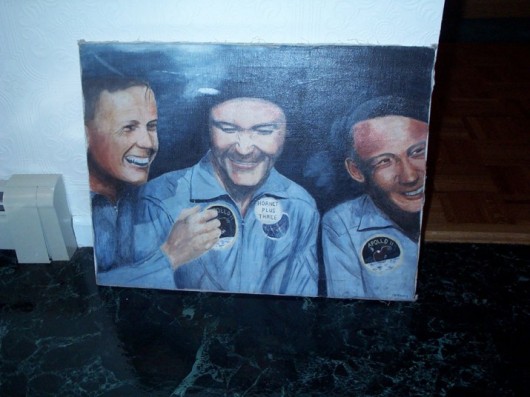
One of the favorite things I actually won is a weird, folky painting of the Apollo 11 astronauts, the “Heroes of Technology”. The seller listed it as “prison art” but no one really knows where it came from. I put in a bid for what I was willing to pay and ended up winning it for much less, which is the way you hope that eBay will always work.
Can you explain your relationship to curating?
It’s an uneasy one. I want things to be a certain way; my way. It’s a selfish and arrogant belief that I can make something better. I always liked the slogan for the giant corporation BASF: “We don’t make a lot of the products you buy. We make a lot of the products you buy better.” I have been fortunate to be involved with projects where someone has let me try to do that. I’m more comfortable as an editor or gatherer than a creator.
Follow this link to read the rest of the interview with Andy Beach in 01 Magazine, or click here to browse the rest of Issue 7.
